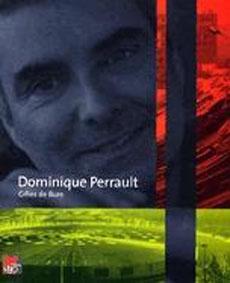Georgii Krutikov. The Flying City and Beyond / S.O. Khan-Magomedov

Georgii Krutikov epitomised the utopian ideal of the Russian Avant-garde. In 1928, while still a student at the Moscow Vkhutemas, the budding architect presented his visionary solution to the seemingly impending problem of unsustainable population growth; a flying city.
Encapsulating the spirit of the times, Krutikov’s soaring city caused a sensation, daring to re-imagine and re-make the world as an exercise in possibility; rationalized through data, realized in sketches and plans.
Architectural historians and devotees of Russian modernism have cited the influence of Krutikov?s Flying City. Yet, for decades, little was written about this remarkable project, its precocious author or his subsequent career.
Calling down Krutikov’s city from the clouds, eminent scholar S. O. Khan-Magomedov separates myth from fact to uncover a wealth of previously unseen visual and documentary material, affording insight into this truly revolutionary work, its fascinating creator and a varied later career that spanned influential membership of Nikolai Ladovskiis rationalist Association of Urban Architects (ARU), his contributions to urban planning, his post-constructivist designs for the Moscow Metro and his passion for preserving Russia’s architectural heritage.
S.O. KHAN-MAGOMEDOV
(1928-2011) has been widely recognized for his outstanding contribution to the study of the Russian avant-garde movement during the 1920s and 1930s. He has written countless monographs, articles and books, including the legendary Pioneers of Soviet Architecture, Pioneers of Soviet Design and One Hundred Masterpieces of the Soviet Architectural Avant-Garde. He has written on the most important architects of the Russian avant-garde, including Konstantin Melnikov, Alexander Vesnin, Nikolai Ladovsky, Alexander Rodchenko, Moise Ginsburg, Ivan Leonidov, and Ilya Golosov. Khan-Magomedov contributed greatly to the scholarly research about Russian avant-gardists, and studying the personal archives of over 150 Russian architects, artists, designers and sculptors, which revealed a number of previously unknown facts about their lives.
Khan-Magomedov held a doctorate in art history and was an honorary member of the Russian Academy of Art. In 1992, he was awarded the Russian Federations Distinguished Architect title, and in 2003, he was awarded the State Prize of Russia for his contributions to the field of architecture.
Translated by CHRISTINA LODDER
Professor Christina Lodder is an established scholar of Russian art. She is currently an honorary fellow at the Universities of Edinburgh and Kent, Vice-President of the Malevich Society, and co-editor of Brills Russian History and Culture series. Among her publications are numerous articles and several books. She has also been involved with various exhibitions such as Modernism (Victoria and Albert Museum, London, 2006) and From Russia (Royal Academy, London 2008).
«The first translation of the late veteran Soviet scholar Khan-Magomedovs study of the designer of the notorious flying city, a seriously argued 1928 proposal for an airborne form of settlement as a solution to the housing crisis bequeathed by the bourgeois city. It gives weight both to this justly famous scheme and to Krutikovs later career designing elegant, but comparatively earthbound stations for the Moscow Metro.»
Owen Hatherley’s books of the year: The Architectural Review
«An extraordinary and careful study by S. O. Khan-Magomedov. A particularly contemporary title when we remember the first sentence of The history of the pool by Rem Koolhaas, included in Delirious New York: Moscow 1923. At school one day, a student designed a floating swimming pool. Nobody remembered who it was, The idea had been in the air. Others were designing flying cities, spherical theaters, whole artificial planets.»
Juan José Barba: Metalocus
«Since the landmass available to humanity was limited, and the population was exploding, a radical solution was needed. Krutikovs idea? Mobile architecture. By mobile, he meant to place buildings in the sky, so the land could then be cultivated [
] Although Krutikovs design wasnt published at the time, architects recalled his visionary workand the furor it causedmany years later, during the Space Race of the 1950s.»
Rebecca Maksel: Air & Space Magazine.
«The goal of Krutikovs work was to prove the theoretical possibility and preferability of mobile architecture.»?
«In this theoretically possible and practically impossible project, technology becomes a part of ‘nature’ since the potential for this undertaking is present in it and takes on its sublime quality.» ?
«The pleasure that Krutikovs project offers is the pleasure in the sublime, a disinterested pleasure in perceiving something immense that transcends a moment and a place.»
Julia Vaingurt Wonderlands of the Avant-Garde : Technology and the Arts in Russia of the 20s
«If the Americans had invented the skyscraper, Revolutionary Russia ought to create a whole new edifice [
] Georgii Krutikovs Flying City (1928) turned this pyramid into an elliptical ‘parabaloid’ curving from the edge of Earth into orbital space, floating thanks to the power of atomic energy.»
Michael G. Smith Rockets and Revolution: A Cultural History of Early Spaceflight
«Georgii Krutikovs ‘City of Aerial Paths of Communication’ settled for nothing less than the domestication of the planet.»
Susan Buck-Morss Dreamworld and Catastophe: The passing of Mass Utopia in East and West
Sin existencias
Sin existencias en este momento. Si desea información sobre el libro, por favor contacte con bookshop@ivorypress.com


